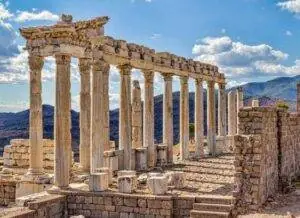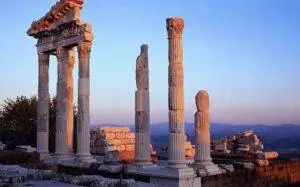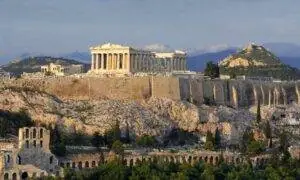Pergamon Bergama was an ancient Greek city in Mysia, modern-day Bergama, Turkey. It was founded in the 12th century BC and became a major cultural and scientific center during the Hellenistic period. Pergamon was also a powerful kingdom that ruled over much of western Anatolia.
Pergamon is best known for its acropolis, a fortified citadel that was built on a hilltop overlooking the city. The Acropolis contained a number of important buildings, including the Temple of Athena, the Library of Pergamon, and the Altar of Zeus.
The Library of Pergamon Bergama was one of the largest and most important libraries in the ancient world. It is said to have contained over 200,000 scrolls. The library was also a major center of learning and scholarship.

The Altar of Zeus is a massive marble altar that was built in the 2nd century BC. It is one of the most impressive examples of Hellenistic sculpture. The altar is decorated with a frieze that depicts the Gigantomachy, a battle between the gods and the giants.
Pergamon was a major center for the worship of Asclepius, the Greek god of healing. The city had a number of temples and sanctuaries dedicated to Asclepius. Pergamon was also home to a number of medical schools and hospitals.
Pergamon was a major cultural and scientific center for centuries. It was home to some of the most important scholars and artists of the ancient world. Pergamon’s legacy can still be seen today in its ruins and in the many works of art and literature that were produced there.




